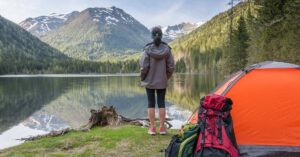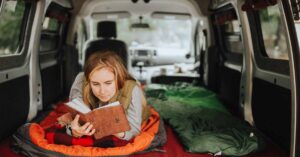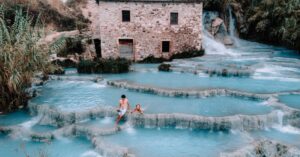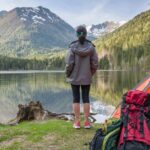Driving Big Sur can be tricky. The road is very winding. It hugs cliffs along the coast. There are sharp turns and narrow lanes. Fog often rolls in, making it hard to see. Traffic can be slow, especially in summer. But the views are amazing. Just drive carefully and take your time.
Big Sur is a beautiful coastal area in California. It’s famous for its stunning views. But driving there can be tough. The main road is Highway 1. It’s narrow and winding. It follows the rugged coastline. There are cliffs on one side. The ocean is on the other side. This makes for a nerve-wracking drive.
Weather adds to the challenge. Fog is common. It can appear suddenly. This limits visibility. Rain can make the road slippery. Rockslides sometimes happen. They can close the road. Traffic is often slow. Many drivers stop to take photos. RVs and tour buses use the road too. They move slowly on the curves. Drivers need to stay alert and patient.
Envision driving on a street that embraces the edge of a precipice. Below you, the ocean crashes. Without warning, fog appears. On the wheel, your knuckles turn white. This is a Big Sur. It is one of the world’s most beautiful drives. But on the other hand, it’s one of the most difficult. Are you up for the challenge? Buckle up. Let’s explore why this stunning route tests even the most skilled drivers.
Driving Big Sur: Why It’s Considered Challenging
California’s Big Sur is a well-known coastal area. It is famous for its breathtaking views. However, Big Sur can be tricky to drive through. Highway 1 is the name of the main highway. The road is long and winding, and it goes along the coast.
The road is very narrow in many places. It has sharp turns and steep drops. On one side, you have tall cliffs. On the other side, you see the Pacific Ocean far below. This can make some drivers nervous. The road often has no guardrails
Weather adds to the challenge. Fog is common in Big Sur. It can appear suddenly and reduce visibility. Rain can make the road slippery. Sometimes, there are rockslides. These can close the road for hours or days.
Traffic is another issue. Many people drive slowly to enjoy the views. Some stop suddenly to take photos. Tour buses and RVs use this road too. They move slowly on the curves. All of this means you need to stay alert. Driving Big Sur takes patience and caution.
The Challenges of Driving Through Big Sur Explained
Driving through Big Sur is beautiful but tricky. The main road is Highway 1. It’s narrow and winding. It follows the coast closely. On one side, you have cliffs. On the other, you see the ocean far below. This can make some drivers nervous
The road has many sharp turns. Some parts have no guardrails. You need to drive slowly and carefully. Weather can make it harder. Fog often rolls in quickly. This makes it hard to see. Rain can make the road slippery.
Nature can also cause problems. Rockslides sometimes happen. These can close the road. Repairs can take a long time. Wildlife might cross the road unexpectedly. You need to stay alert at all times. Driving Big Sur takes patience and caution.
Five Tips for Remaining Safe While Driving in Big Sur
- Keep Your Attention on the Road: Driving in Big Sur requires full focus. The views are amazing but stay focused. Keep your eyes on the road. Watch for sudden turns. Look out for other drivers. They might stop unexpectedly. Be ready for cyclists. Stay alert for wildlife crossing. Don’t use your phone while driving. If you want to take photos, pull over safely first.
- Follow the Speed Limits: Speed limits in Big Sur are there for a reason. Follow them carefully. The road is winding and narrow. High speeds are dangerous here. Most areas have a 55 mph limit. But many curves require much slower speeds. Watch for speed limit signs. They change often. Slow down in foggy areas. Reduce speed when it’s raining.
- Use Turnouts with Responsibility: Turnouts are very important in Big Sur. Use them wisely. If you’re driving slowly, pull over. Let faster cars pass you. Don’t stop in turnouts just to take photos. They’re for traffic flow, not sightseeing. Watch for turnout signs. Use your turn signal when pulling in or out. Make sure it’s safe before you re-enter the road. Only park in turnouts if it’s an emergency.
- Check Road Conditions: Always check road conditions before driving in Big Sur. The area can have sudden changes. Rockslides can close the road. Bad weather might make driving dangerous. Fog can appear quickly. Road work can cause delays. Check the Caltrans website for updates.
- Look at weather forecasts too: Some parts of the road might be closed. Plan your trip based on current conditions. Being prepared helps you stay safe. It also makes your drive more enjoyable.
- Prepare for Limited Services: Big Sur is remote. Services are few and far between. Gas stations are scarce. Fill up before you enter the area. Bring extra snacks and water. Cell phone service is spotty. Download maps before you go. Pack a first aid kit. Bring warm clothes, even in summer. Public restrooms are limited. Plan your stops carefully. Some areas have no services for miles.
Read More:
Pfeiffer Big Sur State Park
Frequently Ask Questions
Why is driving in Big Sur difficult?
The road is narrow, and winding, and follows cliffs along the coast.
What weather conditions make Big Sur driving challenging?
Sudden fog, rain, and occasional rockslides can make driving hazardous.
How does traffic affect driving in Big Sur?
Slow-moving vehicles, tourists stopping for photos, and limited passing areas can cause traffic delays.
Conclusion
Driving Big Sur is a unique experience. It offers amazing views but comes with challenges. The winding road, cliffs, and changing weather keep drivers alert. Traffic can be slow. Services are limited. But with proper preparation, you can enjoy the journey safely. Take your time. Stay focused on the road. Use turnouts wisely. Check the conditions before you go. By understanding these challenges, you can have a better, safer trip. The stunning beauty of Big Sur makes careful driving worthwhile.













